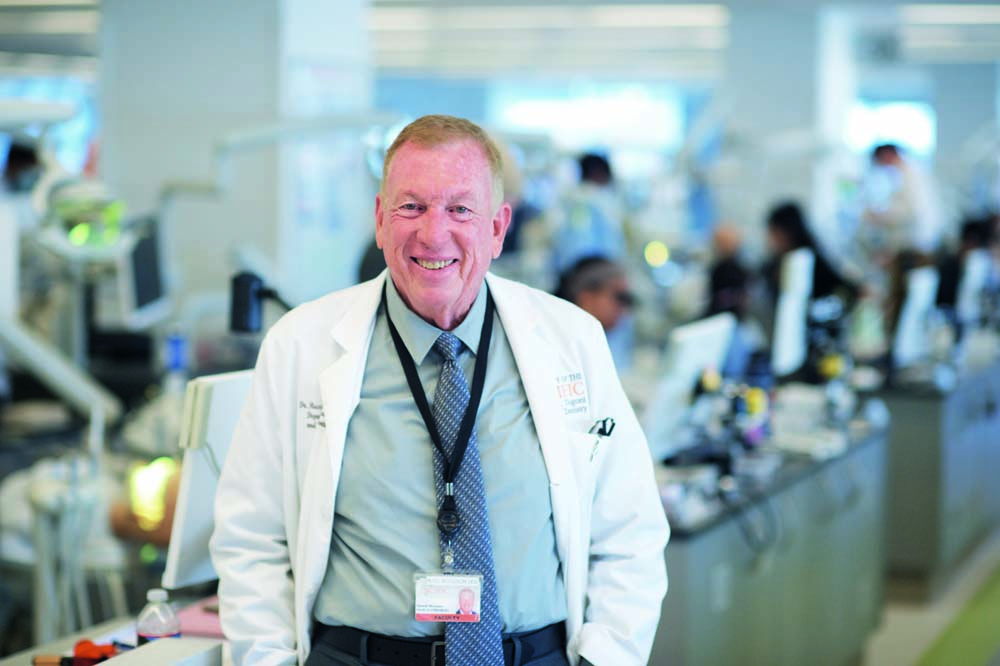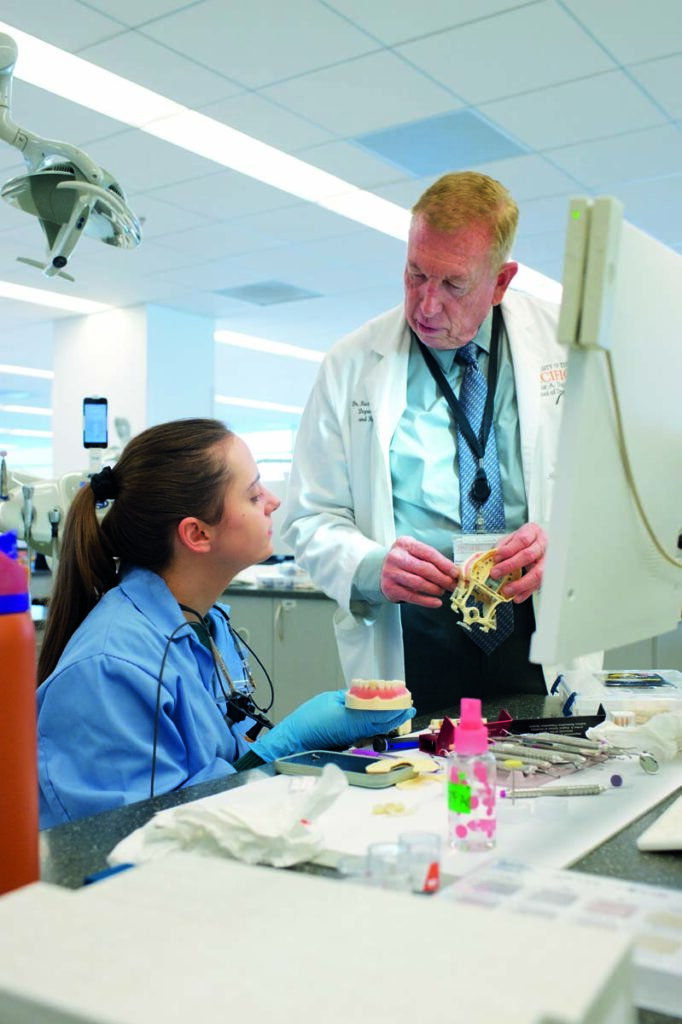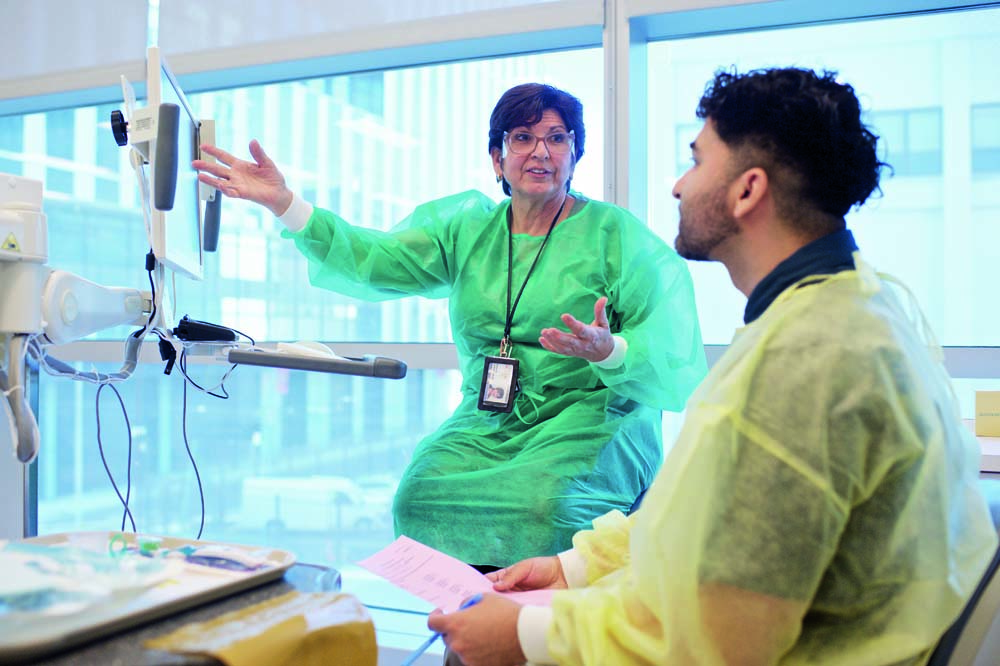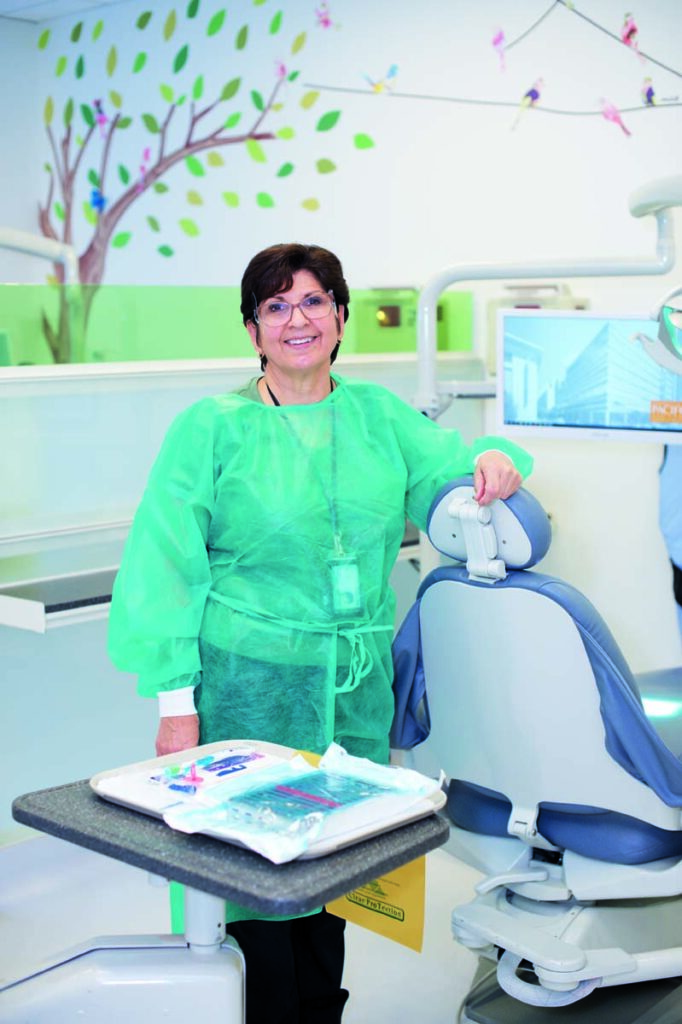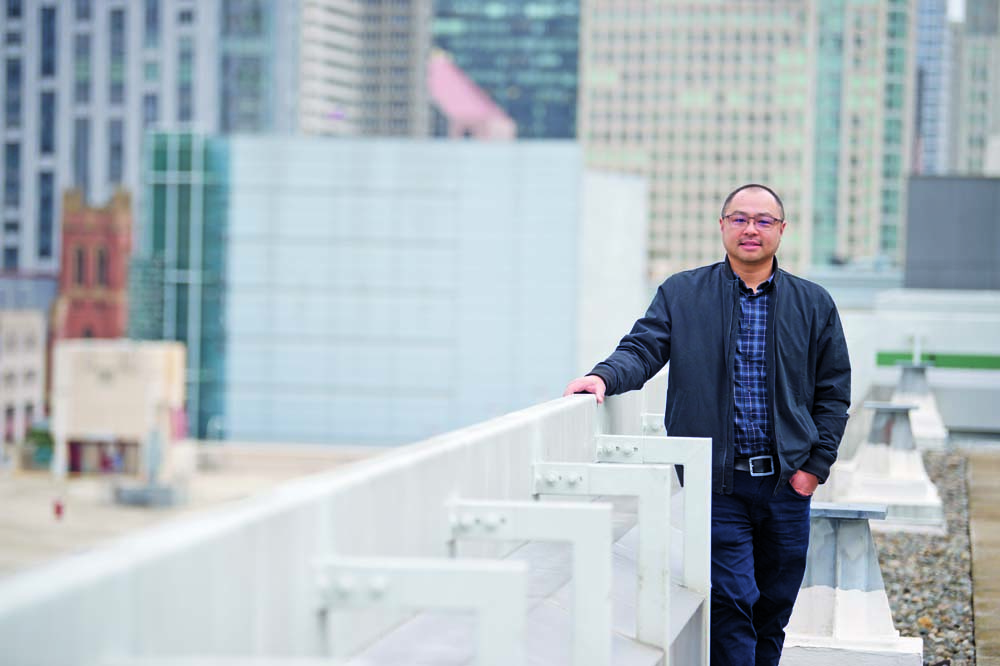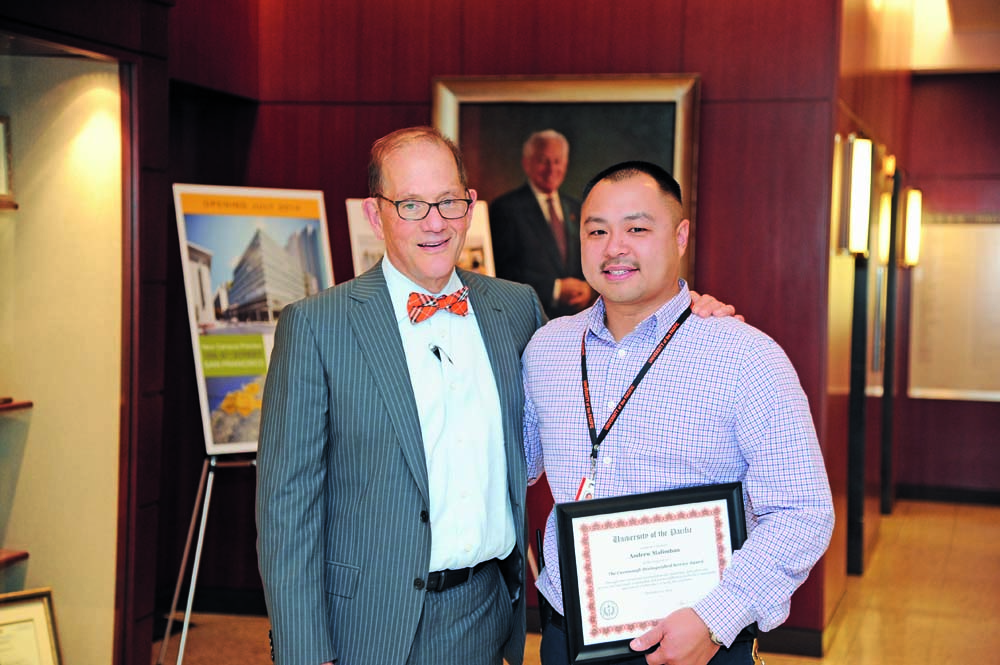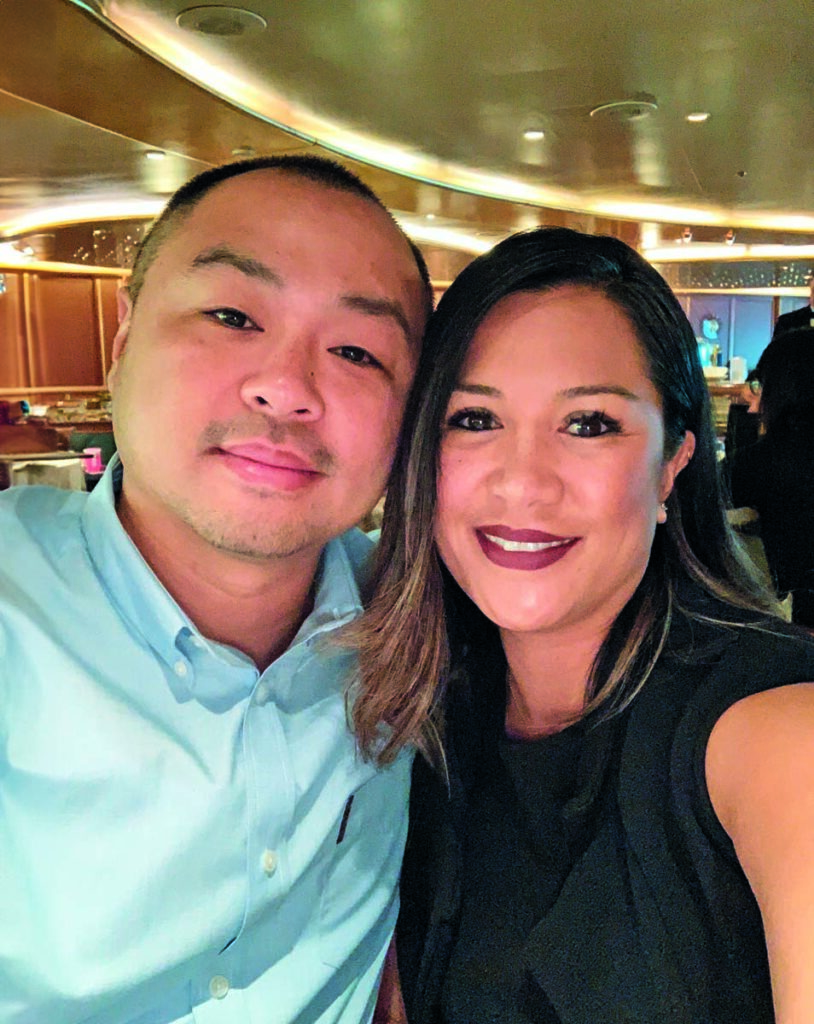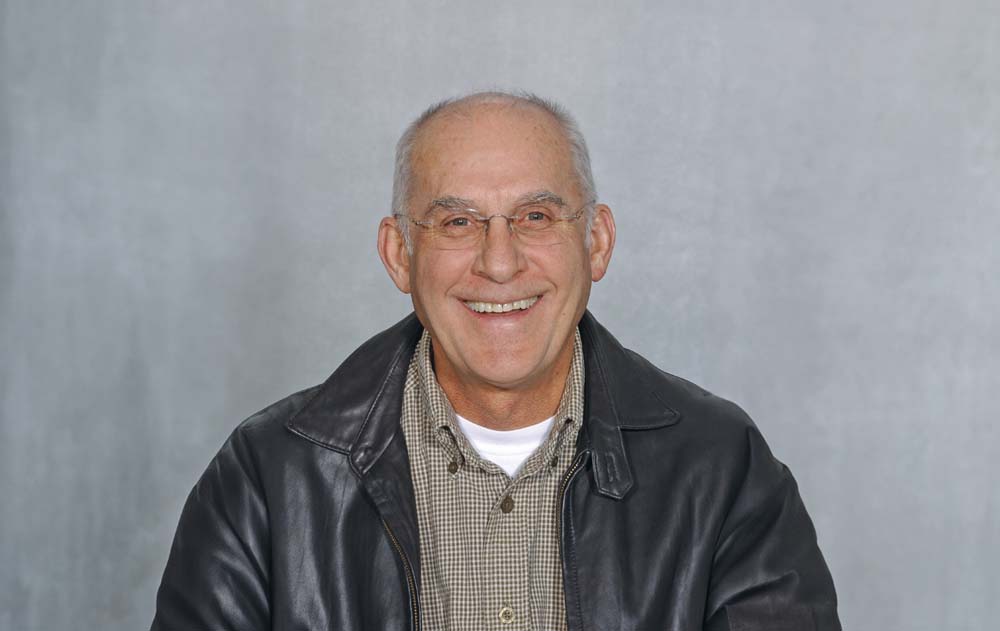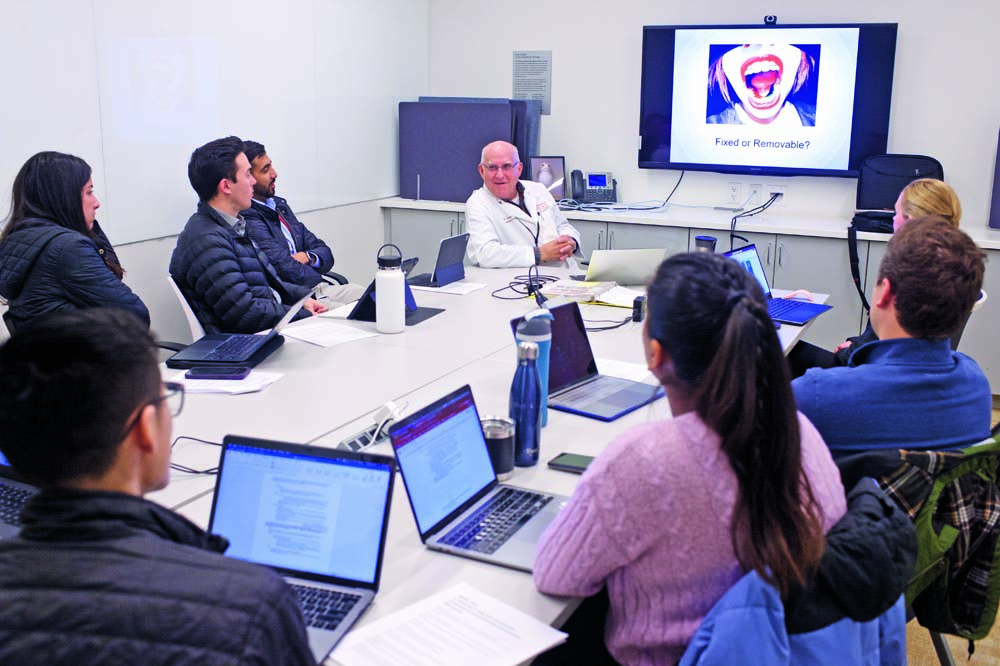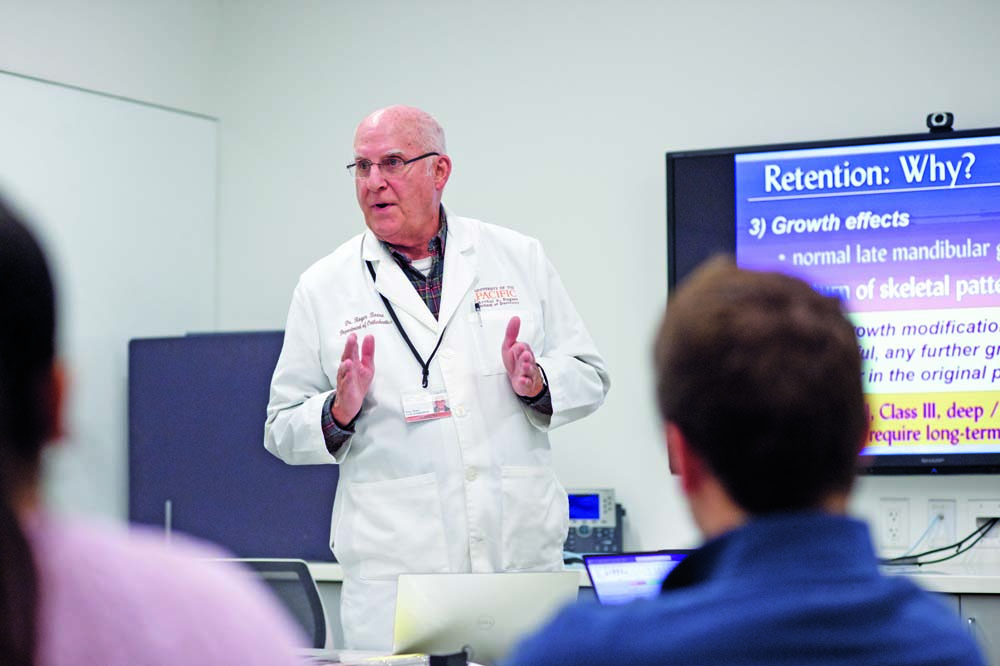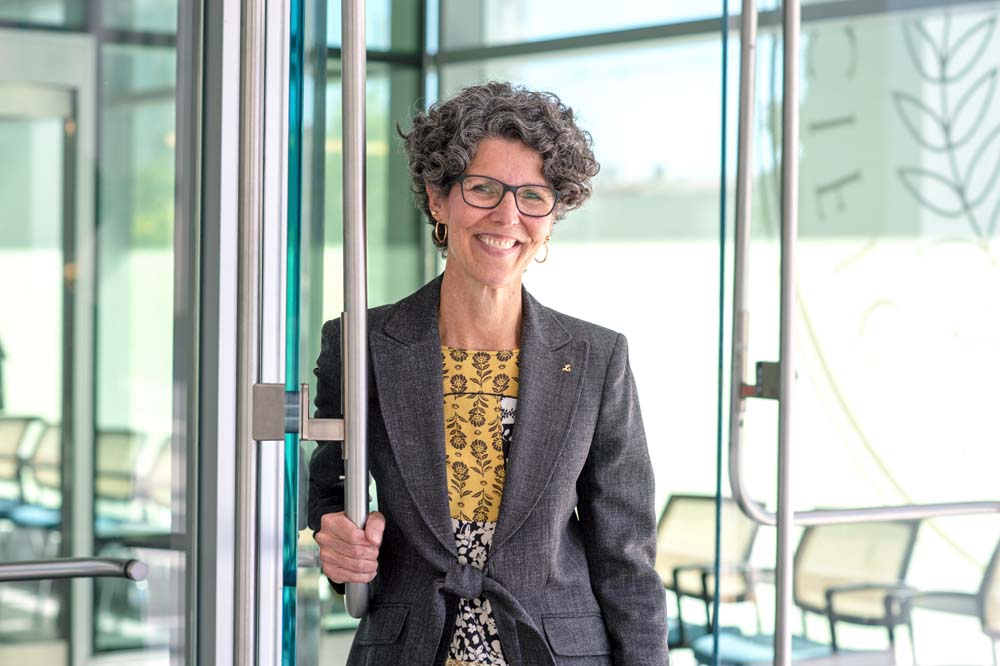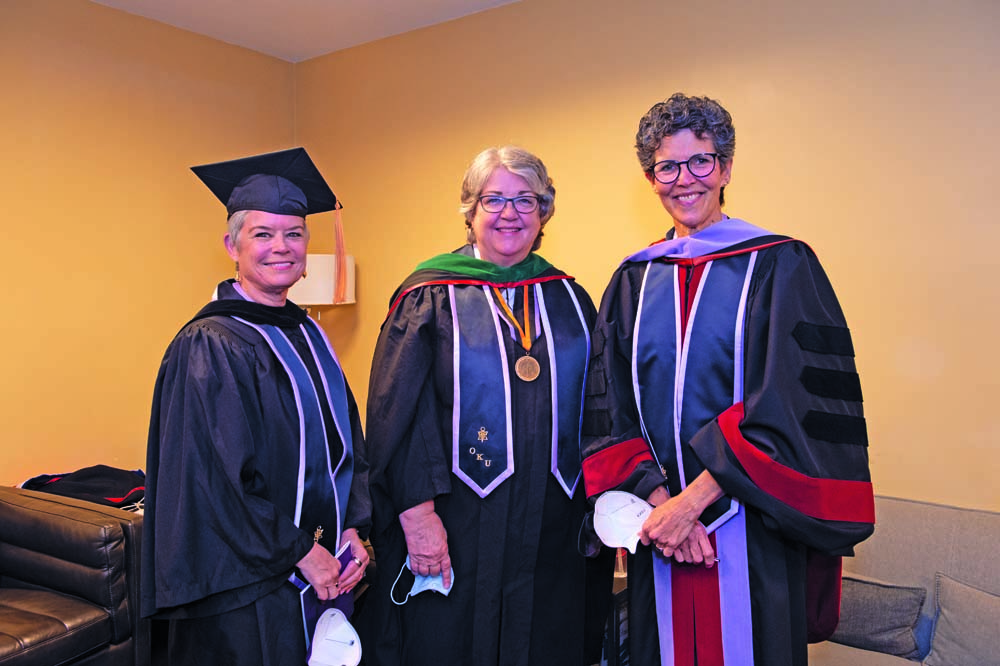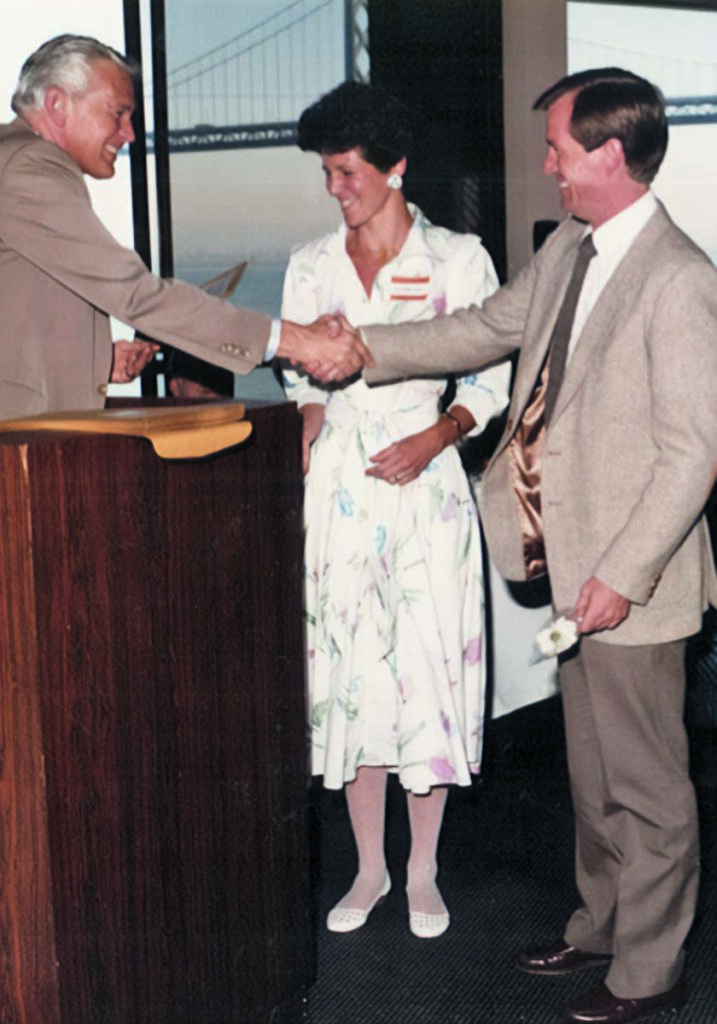Five Individuals Who’ve Gone the Distance
By Jennifer Langham
In a time when the median tenure for employees at a job is five years, a workplace where many people have stayed more than 20 years is unusual.
The five individuals featured in this article have worked at the Arthur A. Dugoni School of Dentistry for a combined total of more than 170 years—not counting time at the school as students. They all say that what keeps them here are the people—the friendships with colleagues, patients and students—and the way in which the dental school community has become, for many long-time employees, like a family.
Dr. Russ Woodson ’79
As a student at the Dugoni School of Dentistry, Dr. Russ Woodson ’79 realized that someday he wanted a career in dental education. Five years after graduating, he was contacted about a faculty opening at his alma mater. He proceeded to sell his half of a dental practice he had opened with classmate Dr. Robert Brombacher ’79 in San Diego and move back to San Francisco.
Woodson has had a variety of roles in his 40 years at the dental school, including course director for the International Dental Studies (IDS) program, group practice administrator, restorative clinical faculty member and director of quality assurance. He’s currently an instructor in the preclinical technique simulation lab and serves as course director for the IDS “Introduction to Clinical Practice.” He also continues to see his private patients in the school’s Faculty Dental Practice, as he has done since 1984.
“Over the years, I’ve loved watching the transformation of young college students as they’ve become doctors.”
Sharing his dental experiences with students, just like his dental school mentors did, has been an important part of Woodson’s career at the Dugoni School of Dentistry, especially during his 22-year tenure as a group practice administrator in the Main Clinic. “Helping students acquire and manage patients, monitoring their progress and ensuring that they graduated on time with well-rounded clinical experiences allowed me to develop close connections and friendships with so many students,” he says. “I have seen thousands of students graduate over the years, and they’ve been like family to me.”
The last four decades have brought huge changes in dentistry in general; Woodson mentions electronic health records, 3D dental imaging, digital impressions, advanced bonding systems and microsurgical dental techniques as just a few. But he has also seen changes in the demographics of the student body. “When I started, only about 10% of our students were female, and now the ratio is about 50%,” he notes. “The IDS program has also greatly diversified our program with a rich mix of cultures and student backgrounds. Having international students has added many new perspectives and new ways of thinking to our school culture.”
Photos by Chris Woodrow and Jon Draper
Woodson has stayed at the dental school for 40 years for many reasons: relationships with colleagues, students and alumni; the intellectual stimulation of teaching; and the satisfaction in helping students achieve their goals. But the biggest reason, Woodson says, was his connection with the late Dr. Arthur A. Dugoni ’48 himself. “He was a good friend, and I have a lot of great memories of him. He inspired me and motivated me, and I just want to pass on the traditions and the character of the dental school that he created.”
Woodson adds, “Dr. Dugoni always believed in treating people with dignity and respect, and that’s what I’ve tried to do with our students, patients and staff.”

Maria DeGunto, RDA
Maria DeGunto, RDA, recently met a student with a familiar last name in the Pediatric Dentistry Clinic and was unsurprised when the student said, “My brother said to tell you ‘hi.’” After 40 years of working at the Dugoni School of Dentistry, it’s not unusual for DeGunto to encounter not only siblings, but also children and even grandchildren of former students and patients.
DeGunto answered a newspaper ad for a job teaching in the Hutto Patterson Pediatric Dentistry Clinic in 1983, where she continues to teach today. “I like meeting and working with different students when they rotate through the Pediatric Clinic during their second and third years.”
“This job really suits my personality.”
As a dental auxiliary utilization teaching assistant, DeGunto teaches skills in a simulated private practice environment, evaluating students on competencies such as ergonomics, time management and communication skills with patients and their parents. “We are like a second set of eyes for the faculty during a dental procedure,” she says.
DeGunto also works as a dental assistant in a private practice on Saturdays, and she shares this experience with her students in the clinic. She gives an example: “If a student takes an hour and a half to place a stainless steel crown on a child’s tooth, I tell them that when they become practicing dentists, they’ll have about 25 minutes to do that procedure.”
In addition to teaching, DeGunto has been a shop steward for the dental school’s union, Office and Professional Employees International Local 29, for almost 35 years, advising union members on workplace situations, advocating for members with managers and participating in pay negotiations. It’s a fitting role for someone raised in a family of community activists. “My parents marched with Caesar Chávez, my mom advocated for bilingual education and my dad was shop steward of his company’s union,” DeGunto says. “So I grew up hearing about the importance of unions and community involvement.”
In her four decades with the dental school, DeGunto has seen significant changes—the new school location and many technological advances, as well as more female students and a more diverse student body in general—but her love of the job has remained the same.
“It’s kind of a cliché statement, but it’s true: my job has never felt like work,” she says. “I’ve enjoyed every day.”

Andrew Malimban
Twenty years ago, Andrew Malimban’s first job in the Building Operations division at the Dugoni School of Dentistry was working part- time in the mailroom and part-time supplying and restocking gloves and other disposable clinical items. He advanced to a job as lighting technician, then to lead technician and later as manager for the department. And now, with the recent retirement of Neil Kingston as director, he oversees the school’s physical plant as the newly appointed director of Building Operations.
Malimban sees the work of his team in the physical plant as integral to the school’s mission. “For students to learn and patients to be treated,” he says, “it’s critical for everything to work.”
During Malimban’s two-decade career at the dental school, one of the biggest changes has been the campus move from Webster Street to Fifth Street. He says that the two locations placed very different work responsibilities on the physical plant team. For example, maintaining the former location’s 70-unit student housing building was challenging, while the new dental school building has almost double the square footage with newer, more advanced and complex equipment.
“We have 207 dental chairs and 179 simulator units to maintain,” he explains,“ as well as the building facility itself and all the utilities.”
The new location also houses Pacific’s non-dental academic programs in the fields of audiology, data science and music therapy, and the facility hosts more events. “We support the requests to set up rooms and set up for functions. It’s a great way for our team to connect with our school community,” Malimban says.
The Dugoni School culture is the foundation of Building Operations’ work, says Malimban. “When we repair equipment that makes a person’s job easier, or we respond to a work order or we come together with another department to plan for an event, we know that we’re all on the same team,” he says.
Supporting the dental school’s mission is a family affair. Malimban’s wife Mary Ann is also a long-time employee with 21 years of service at the dental school. Currently, she works as clinic coordinator for the Faculty Dental Practice.
Malimban credits his long tenure to the sense of purpose at the Dugoni School. “It’s a great place to work. Because of the reputation of the school as one of the top dental schools in the country, it makes you want to do your part to contribute, to keep it going,” he says. “I think we all take pride in being a part of that.”

Dr. Roger Boero ’64, ’75 Ortho
It is incredible that Dr. Roger Boero ’64, ’75 Ortho has dedicated almost five decades of service to the Dugoni School of Dentistry— but then, a Boero has taught at the school for most of the last 90 years.
“My father, Dr. Edward Boero, graduated in 1935 and joined the faculty immediately after, in what was then called crown and bridge, now restorative dentistry,” explains Boero. “He served as chair of that department and retired in the 1970s.”
Boero joined his father’s general dentistry practice after he graduated in 1964, soon followed by both of his brothers, Drs. Gary Boero ’65 and Mark Boero ’70, after they graduated from the Dugoni School of Dentistry too. “My father really loved the profession so much, which is probably why the three of us followed him into dentistry,” Boero says.
For Boero, however, a general dentistry practice wasn’t where he wanted to spend his career. After returning to the Dugoni School of Dentistry to earn a master’s degree in orthodontics, he started an orthodontic practice in 1975 in San Rafael, California, and saw patients there for almost four decades until selling the practice in 2014. “I always enjoyed the intellectual challenge of orthodontics,” he says.
“It’s a very mind-oriented profession and extremely stimulating.”
Boero began sharing his passion for the field with students and residents when he joined the dental school faculty after completing his advanced degree. With only a couple of short breaks since then, he has continued to teach at the school. Currently, he teaches “Principles of Orthodontics” to second-year orthodontic residents.
He reflects on some of the many changes he has seen at the dental school throughout his career, including technological advances, the new downtown campus for the school and the different approach to training dentists. “When I went through dental school, it was very much like a military boot camp,” Boero says. “Dr. Dugoni’s emphasis on the humanistic approach was one of the great contributions he made. Dental school went from being like boot camp to a learning institution.”
Boero says that it has been rewarding being around the “bright young minds” of the ortho residents and that teaching at the Dugoni School of Dentistry enhanced his own work. “One of the things I appreciate about teaching is that you have to continually read and study to stay up with things,” he says. “I am constantly learning.”
At age 84, Boero says he may soon be ready to retire from teaching. “It has been a great ride,” he says.

Dr. Cindy Lyon ’86
Dr. Cindy Lyon ’86 worked as a dental hygienist for five years before enrolling in the DDS program at Dugoni School of Dentistry. As a practicing dentist in Murphys, California, she helped advocate for a hygiene program to address a statewide shortage of hygienists. So it was exciting when former Dean Arthur A. Dugoni ’48 asked her to become the first director of the Dental Hygiene program on the Stockton campus in 2000.
“I had done some teaching in dental hygiene and hoped to return to it someday, but I never imagined that the opportunity would come mid-career. It has been an amazing and surprising path for me,” Lyon says. “With our wonderful DH team, we’ve graduated more than 400 dental hygienists ready to provide co-therapy for patients.”
In 2007, Lyon moved to the San Francisco campus to serve as chair of the Department of Dental Practice which concentrated on diagnosis, treatment planning, preventive care, community service and practice management. Then in 2017, she became associate dean for oral health education, the position she holds today.
One of her primary goals in these roles has been to remove barriers so that those around her can achieve success. “I count myself lucky that I’ve worked with such creative, hard-working and thoughtful people, and I hope I’ve helped support them in our shared goal of terrific teaching, learning and patient care, as well as encouraged the humanistic culture that makes this place special,” she says.
One of the big changes Lyon has been a part of during her 24 years at the dental school is a “rebalance” of the DDS curriculum competencies based on input from faculty, alumni and other experts in the field.
30
She explains, “We realized that, in addition to being technically excellent, students needed to be more fluent in medicine and to have excellent communication and relational skills.”
Lyon says one way that the Dugoni School of Dentistry trains dentists who are both technically and emotionally adept, focused on medical complexities and caring, is by creating the opportunity for students to treat patients with special needs in the clinic. “This is really unusual for a predoctoral program,” she says, “and I’m grateful that our students can become comfortable treating these special patients and continue this in their own practices.”
Lyon noted that the curriculum has also evolved to address the vast increase in online information, both accurate and sometimes inaccurate. “We help students understand research methods and how to access, appraise and apply scientific information more effectively.”
Although Lyon plans to retire this year, she admits to having mixed feelings. “There’s only so much gardening and Sudoku a person can do,” she laughs. “I am looking forward to spending time with my husband John (Dr. John Muller ’85) and our families, but I’m going to miss the family I have at the Dugoni School, this community of people with a common goal of caring for others.”
Jennifer Langham is a contributor to Contact Point and other University of the Pacific publications.
